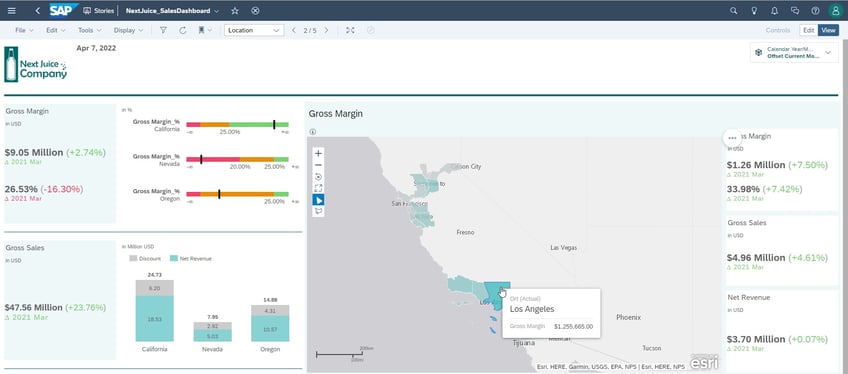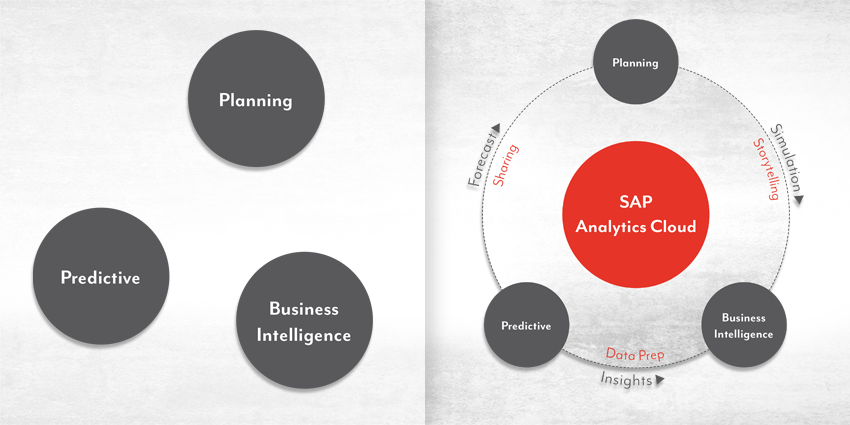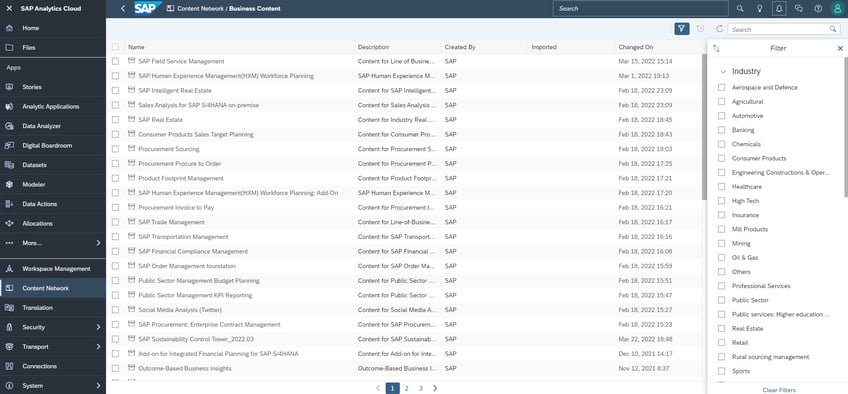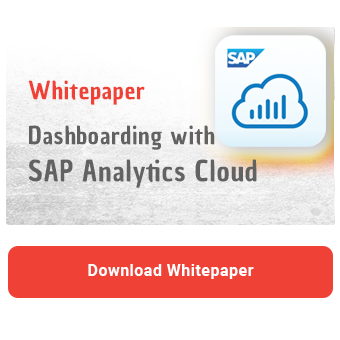SAP Analytics Cloud is one of the newer tools in the world of self-service dashboards and data visualization. After a bumpy start, the initial focus was on catching up to the top dogs, but SAC can now keep up with tools like Tableau or Power Bi and provide fresh impetus of its own. The quarterly updates have introduced some interesting features and improvements over the past few years. We have followed SAC from the beginning and summarize in this article what has happened and why you should give SAC a (second) chance.
1. Platform advantages
The SAP Analytics Cloud is designed as a platform and this approach brings several advantages. The versatile connectivity of the SAC makes it a single point of truth by bringing together data from a wide variety of sources. In the process, the connectivity options are constantly being expanded, for example, the "New Model" was introduced in 2021, which creates new modeling options for "Acquired Data".
However, the Live-Connections preferred by many SAP BW experts are also being continuously improved and expanded. For example, the handling of hierarchies and variables is much more mature than in the original release of SAC. A look into the crystal ball reveals that further improvements and new Live Connections are planned for the future. This is pleasing, because with Live-Connections the SAC can play to its strengths and use synergy effects. Often, the authorizations are already sufficiently maintained in the underlying SAP system and the data is prepared for reporting. With a live connection, users can quickly and easily create their story dashboard without having to worry about controlling data access.
The platform idea was further expanded in 2021 and the interface and navigation simplified. The improved integration of the various SAC components such as Planning and Predictive creates a smoother user experience, as there is now less need to switch between different environments.
2. Stories & Analytics Designer
The actual dashboarding is done in the Story environment and the Analytics Designer. SAC Story is designed for power users in the business departments who want to visualize data quickly and easily. Visualizations, logical links and other functionalities are mapped via widgets. With new releases, new useful widgets are added again and again. In addition to tables, charts, filters and other standard components, value driver trees or the linked analysis function can now be used out-of-the-box. But also new layouts or features like the "Optimized Story Viewer" improve the user experience significantly. Through the combination of layout, smart features and widgets, amazing dashboards can be implemented without writing a line of code. By deliberately avoiding scripting possibilities - with the exception of R visualization - SAC Stories always remains understandable and intuitive for the user.

If more freedom is needed in the dashboard creation, the Analytics Designer is the right tool. It contains almost all the widgets and functions that are also available in stories, but is used by front-end developers. The workspace is extended by the options Layout and Scripting. At the beginning, the Scripting API was quite sparsely developed. However, due to the continuous expansion of the API commands, many more complex use cases can now be implemented with scripting. In the meantime, application developers can also customize widgets via CSS. On the one hand, this opens up additional design options, and on the other hand, a CSS class that has been defined once can be assigned multiple times. Thus, related widgets can be designed centrally via the CSS mask instead of making the same changes for individual widgets in the styling panel.
Dashboarding with SAP Analytics Cloud -
Download the whitepaper here!
3. Planning & Predictive
A lot has also been done in the area of planning. The numerous improvements to the planning options, quality-of-life updates and the expansion of the collaboration options with integrated calendar and comment function are only part of the positive development. The version concept includes private as well as public versions and increases the overview. With the help of data actions, users can map and automate complex planning processes.
However, the biggest highlight is the introduction and expansion of predictive functionalities. In addition to various models, influencers can also be defined. With these, it is possible to define different focal points in a model training and gain new insights. In addition, the linking of planning and predictions offers great potential. Thus, it is possible to determine the planning values in a planning application simply by "Create Predictive Forecast". Of course, it is also possible to use entire "Prediction Scenarios" and integrate them into the planning application. Whether planning applications, predictions scenarios or a combination of both, the presentation is done in a story or a dashboard. Of course, additional sources can be connected to provide further context.
 4. Business Content
4. Business Content
SAP has always been known for its business content and also creates Business Content for the SAC. Meanwhile, the Business Content Center contains many "out-of-the-box" scenarios that are easy to adopt and provide a good introduction to the respective topic. For example, there is a predefined scenario for operational workforce planning that can be adapted to your specific requirements. While other tools usually only provide a blueprint, SAC provides the whole model and processes.

The delivered content can be adapted and extended, but this has its limits. Not every content is suitable for every company. If the company's own process deviates too much from the intended processes in the Business Content, the implementation of an own model in the SAC is the better way.
Nevertheless, the available content is an enrichment; in the best case it is the suitable solution, in the worst case the content provides ideas and suggestions for use cases that can be implemented with the SAC.
5. Software as a Service
IT administration is a big topic in many companies. In the case of SAC, this part is handled by SAP. Maintenance, server upgrades and also software updates are carried out by SAP in the cloud, without any further action on the part of the customer. Only a small hint that new functions are available indicates that a quarterly update has been installed.
Another advantage of SAC's cloud approach is access to the same via web browsers/mobile apps instead of desktop client tools. Every employee in a corporation knows the problem of getting third-party programs installed on the computer - it is difficult or even impossible. Accessing SAC through a web browser solves this problem. Even the Analytics Designer for complex dashboards runs completely in any modern web browser. This is a big advantage over the competition from Tableau and PowerBI, which largely rely on desktop client tools.
SAP Analytics Cloud Features - Our Conclusion
What started as SAP Cloud for Planning and was extended very early with the self-service component SAC Story has evolved into a large reporting, analysis and planning platform. Planning capabilities and machine learning building blocks are integrated into the core of SAC. The models and prediction results are used in SAC Story or Analytics Designer.
The consolidation of different tools that would have been self-sufficient years ago, reveals the true strength of SAC. This lies not in the individual tools themselves, but in the interaction of these tools within a platform. Through the continuous further development of the tools and the platform, SAC is now a much stronger product that can cover many use cases.
Even though we would like to see a few more features or improvements here and there, such as data binding for custom widgets, more coding options in the API or in CSS, SAC has undergone an amazing development in recent years and is definitely worth a (second) look.
Do you have questions about this or other topics? Are you trying to build up the necessary know-how in your department or do you need support with a specific question? We will be happy to help you. Request a non-binding consulting offer today.
SAP Analytics Cloud, Dashboarding


























